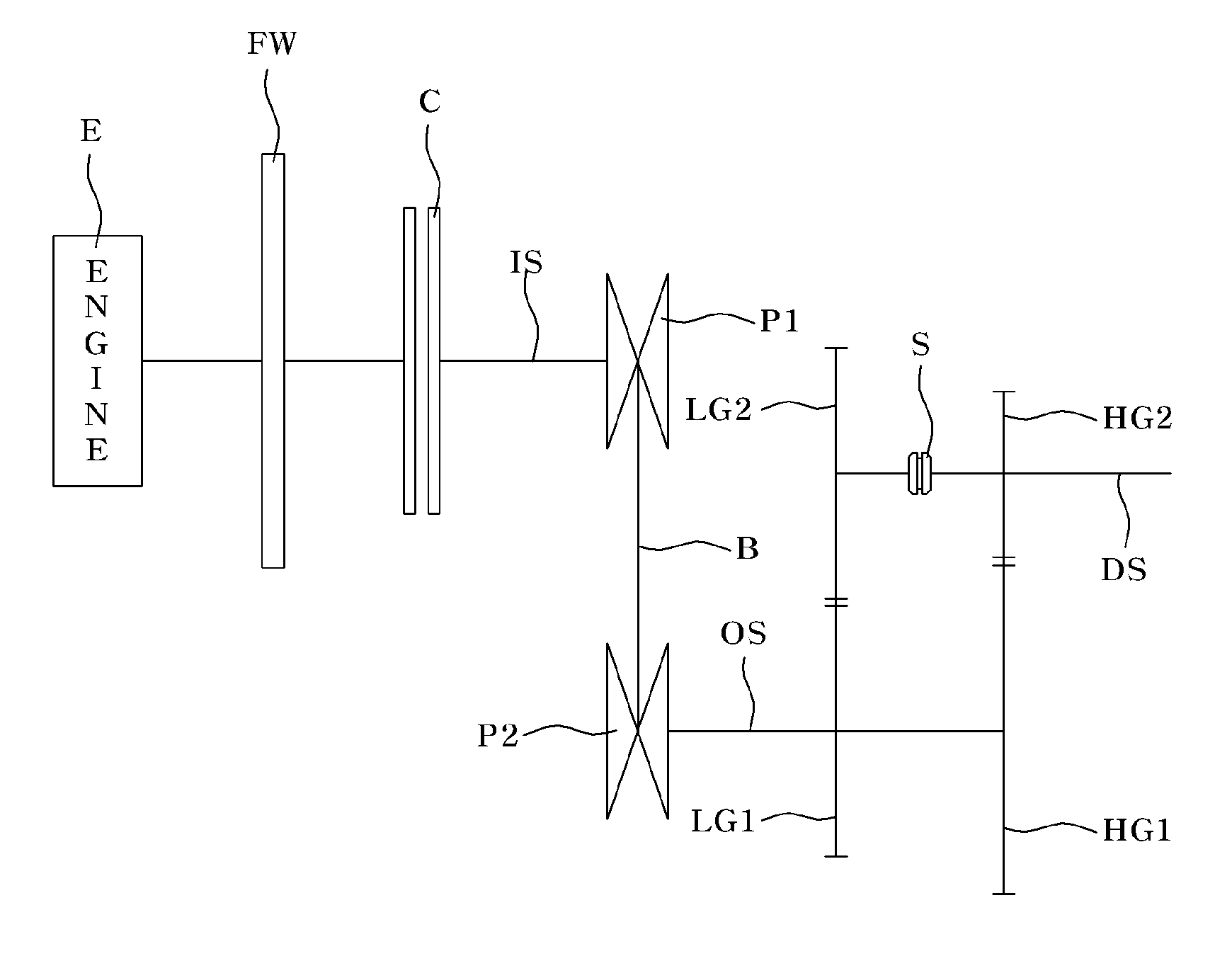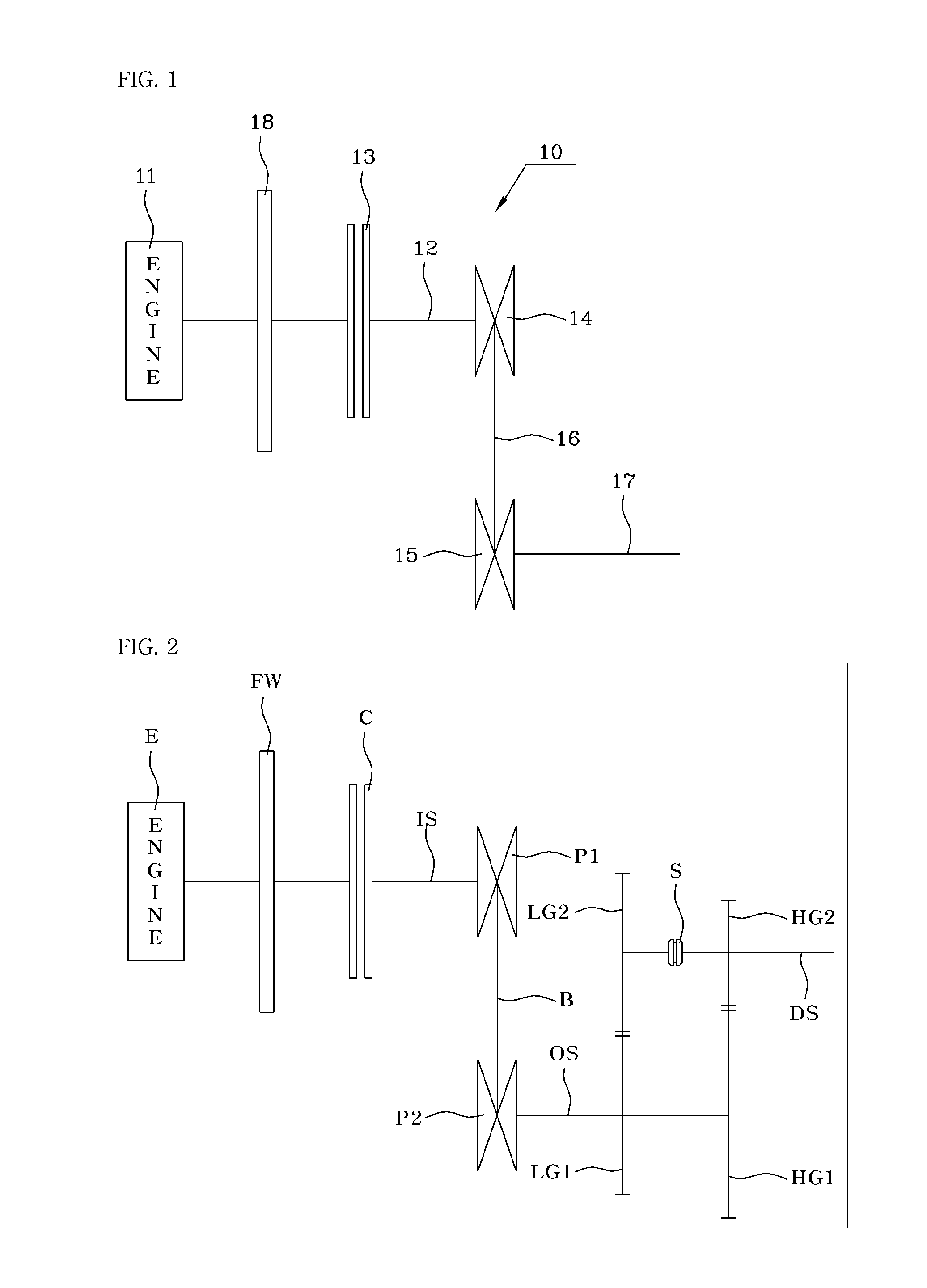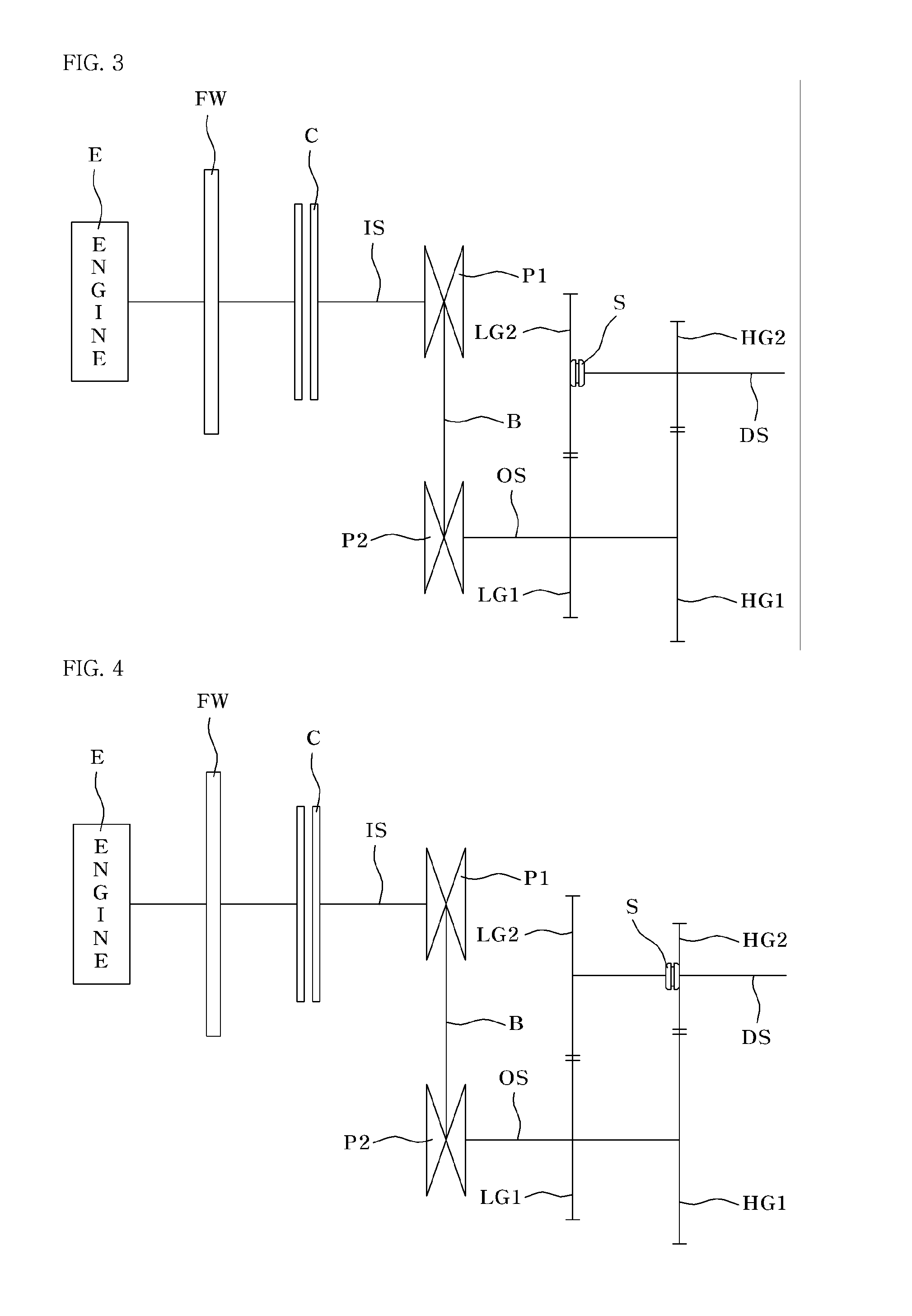Dual mode continuously variable transmission
a transmission and continuously variable technology, applied in the direction of gearing control, gearing elements, gearing rings, etc., can solve the problems of reducing the effective diameter of the pulley, energy loss, and the inability of the cvt to effectively endure the high engine power, and achieve excellent running performance, excellent mileage, and the durability of the relationship. deteriorate
- Summary
- Abstract
- Description
- Claims
- Application Information
AI Technical Summary
Benefits of technology
Problems solved by technology
Method used
Image
Examples
first embodiment
[0036]FIG. 2 through FIG. 4 are diagrams schematically illustrating the construction and power transmission mechanism of a continuously variable transmission (CVT) according to the present invention. Like a conventional CVT, the dual mode continuously variable transmission (DMCVT) according to the present invention comprises two pulleys P1 and P2 and a belt B, with gears LG1, LG2, HG1 and HG2 coupled to the pulleys for changing through the gear ratios between dual modes.
fourth embodiment
[0037]A clutch C for controlling speed change operation of the CVT is provided on an input shaft IS which directly receives a rotatory force from an engine E, a drive variable speed pulley P1 is mounted on the input shaft, and a driven variable speed pulley P2 is mounted on an output shaft OS. The power transmission from the drive variable speed pulley P1 to the driven variable speed pulley P2 is realized by the belt B. It is preferred that the belt B be a metal belt. In the drawing, the reference character FW denotes a flywheel. Further, the clutch C may be selected from conventional dry type clutches, but the type of the clutch C is not limited to the dry type clutches. In other words, the clutch C may be selected from wet type clutches or torque converters generally used in conventional automatic transmissions. In the case of a torque converter used as the clutch C, the structure of the torque converter will be described in the description for the present invention.
[0038]Addition...
second embodiment
[0061]FIG. 5 is a diagram schematically illustrating the construction and power transmission mechanism of a CVT according to the present invention.
[0062]In the second embodiment, the synchro selector S is mounted on the output shaft OS other than the drive shaft DS, and selects gears of either the first mode or the second mode. The mechanism and function of the DMCVT according to the second embodiment except for the above-mentioned difference remains the same as those of the DMCVT according to the first embodiment and further explanation of the mechanism and function of the second embodiment is deemed not necessary.
[0063]FIG. 6 is a diagram schematically illustrating the construction and power transmission mechanism of a CVT according to a third embodiment of the present invention. In the third embodiment, gear trains for changing the gear ratios between first and second modes are arranged in front of the variable speed pulleys. Described in detail, a clutch C is mounted to a first ...
PUM
 Login to View More
Login to View More Abstract
Description
Claims
Application Information
 Login to View More
Login to View More - R&D
- Intellectual Property
- Life Sciences
- Materials
- Tech Scout
- Unparalleled Data Quality
- Higher Quality Content
- 60% Fewer Hallucinations
Browse by: Latest US Patents, China's latest patents, Technical Efficacy Thesaurus, Application Domain, Technology Topic, Popular Technical Reports.
© 2025 PatSnap. All rights reserved.Legal|Privacy policy|Modern Slavery Act Transparency Statement|Sitemap|About US| Contact US: help@patsnap.com



